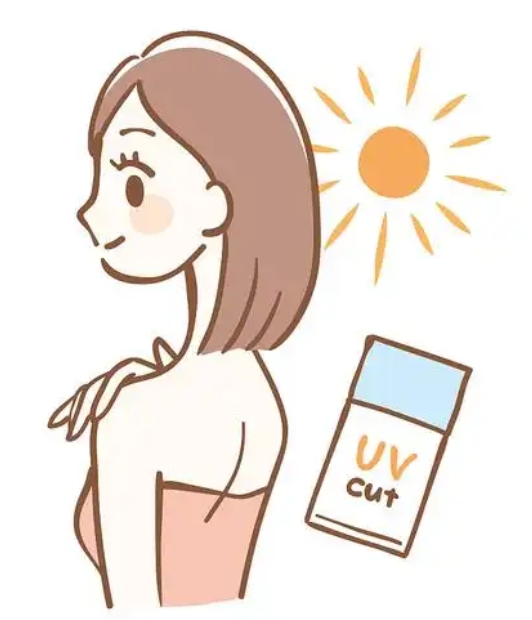News
What is Octyl Methoxycinnamate?
🏵️Octyl methoxycinnamate isooctyl ester is one of the most commonly used sunscreen agents in the world. It has an excellent UV 280-310 nm absorption curve, high absorption rate, good safety, minimal toxicity, and good solubility in oily materials
Therefore, Octyl methoxycinnamate is widely used in sunscreen and other skincare cosmetics. It can effectively absorb ultraviolet rays from sunlight, prevent human skin from getting red, sunburned, and tanned, and is also a treatment drug for photodermatitis.
🍃Octyl methoxycinnamate , as an oil soluble liquid UV-B absorber, can be used in industry as a anti-aging agent and UV absorber for plastics and inks.

Safety assessment of Octyl Methoxycinnamate – What do scientific data say?
👩🔬1. Evaluation conclusions of international authoritative institutions
The US FDA has classified Octyl Methoxycinnamate as a Class I safe and effective sunscreen, allowing its use at concentrations not exceeding 7.5%. Although approved for use in 1999, in the latest evaluation in 2021, the FDA requested additional transdermal absorption data to confirm long-term safety.
After multiple evaluations, the Scientific Committee on Consumer Safety (SCCS) of the European Union has determined that the safe upper limit for the use of Octyl Methoxycinnamate in sunscreen products is 10%. The 2022 reassessment report specifically states that existing data indicates that Octyl Methoxycinnamate does not have a significant impact on the human endocrine system at standardized doses.
Both the Japanese Ministry of Health, Labour and Welfare and TGA have included Octyl Methoxycinnamate in the list of permitted sunscreen agents, without imposing additional restrictions on the concentration of use.
💆♀️2. Skin absorption and metabolism study of Octyl Methoxycinnamate:
The key study published in JAMA Dermatology in 2020 used isotope labeling to track the metabolic process of Octyl Methoxycinnamate in the human body.
After a single application with a standard dosage of 2mg/cm ², the skin absorption rate is only 0.3-1.2%. Within 48 hours, more than 98% of the absorption is completely excreted through urine, and no accumulation is detected in the blood or tissues.
Repeated use did not lead to concentration accumulation in the body.
🌚3. Sensitive muscle measurement data:
The clinical observation of 500 subjects by the Korean Dermatology Association in 2021 showed that:
The use of Octyl Methoxycinnamate sunscreen resulted in an overall adverse reaction rate of 2.4%, mainly manifested as brief mild skin irritation, with no statistically significant difference in irritation rate compared to physical sunscreen agents, and all symptoms resolved spontaneously within 24 hours after discontinuation.
What are the controversies about Octyl Methoxycinnamate and the misconceptions surrounding its composition?
🌞1. Expected skin allergy and allergic reactions
🍉Even though Octyl Methoxycinnamate has a wide use, some people may still experience adverse reactions.
Contact dermatitis. A few users with sensitive skin have reported swelling, inflammation, itching or a sense of detachment.
Phototoxic reactions: Octyl Methoxycinnamate can exhibit phototoxic effects in rare cases when exposed to ultraviolet radiation.
🌈Scientific Information
It is recommended that sensitive muscles be tested in a regional test. A study of 500 participants found about 2-3% of those who used Octyl Methoxycinnamate had mild inflammation because it was less allergenic.
🌞2. Acne or rosacea may be worsened
🍉Certain skin types may not benefit from oil-soluble sunscreen:
Acne: The oily base of Octyl Methoxycinnamate may clog the pores, particularly in those with oily/combination or acne-prone skin.
Octyl Methoxycinnamate has been reported to cause rosacea. Some people report experiencing a burning or flushing sensation.
🌈Remedial measures
Select sunscreens that are labeled “non-comedogenic” or suitable for acne-prone skin.
To minimize the risks associated with pure chemical sunblocks, use a combination of both physical and chemical products.

Is Octyl Methoxycinnamate a Skin Aging Accelerator?
Suggestions and conclusions for selecting Octyl Methoxycinnamate for different skin types
🍂 Suggestions for the selection of different skin types
😀 Healthy skin: safe to use, pay attention to reapplication.
😅 Sensitive acne: Choose a combination of physical and chemical sunscreen (such as a compound containing zinc oxide and Octyl Methoxycinnamate).
🥲 Acne skin: Avoid the formula containing alcohol and essence, and give priority to the texture of shake music.
🤱 Pregnant women/children: mainly use zinc oxide and titanium dioxide, avoid high concentration chemical sunscreen.
🔴 Conclusion:
The skin controversy surrounding Octyl Methoxycinnamate mainly focuses on the irritation risk and theoretical hormonal effects in specific populations, but existing evidence suggests that the safety of Octyl Methoxycinnamate has been recognized by most regulatory agencies at compliant doses. Consumers should choose products based on their own skin type.
✅ Science is advancing and research on ingredient safety is also updating, but the current consensus is that the benefits of using Octyl Methoxycinnamate sunscreen products correctly far outweigh the drawbacks.



